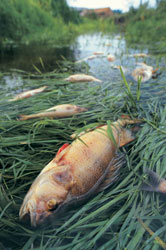Disease control management for sea bream
This epidemiological study was aimed at revealing relationships between exposure to biological agents, stress, or physical environment with mortality or morbidity caused by the parasite E. leei. For disease control, perhaps the most important phase is that of prevention of entry of infective stages into the fish culture environment. To achieve this, healthy stock that have been assayed rapidly and accurately and survey of water quality were both recommended by the report. A strict management regime was also outlined to prevent the spread and enhancement of the parasite. The project's study of the life cycle of the parasite and its environmental preferences and requisites naturally formed the basis of the recommendations. Key points involved avoidance of the parasite's optimum temperature and early marketing of the produce. During the research, it was discovered that prevalence of the disease increased with fish size. Consequently, sale of fish as early as economically feasible was recommended. The mariculture sector has previously been dominated by the gilthead sea bream but during recent years, other species including the sharpsnout sea bream D. puntazzo have increased in popularity. All the recommendations of the study apply not only to the gilthead but also to the sharpsnout seabream. This study has highlighted chemical free control of this parasite through careful management of fish stocks, taking into account the natural requirements during the life cycle of the parasite. Its implementation could avoid such high economic losses in the future for the mariculture industry.







